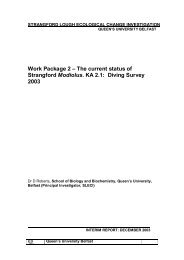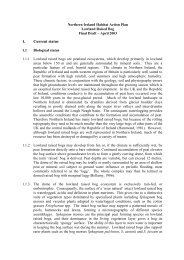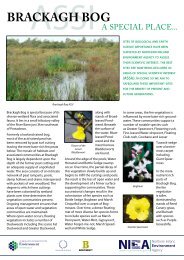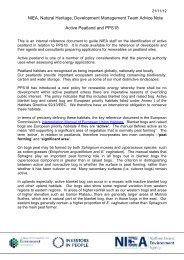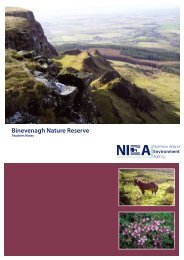Municipal Waste Data Monitoring and Reporting: Interim Guidelines
Municipal Waste Data Monitoring and Reporting: Interim Guidelines
Municipal Waste Data Monitoring and Reporting: Interim Guidelines
You also want an ePaper? Increase the reach of your titles
YUMPU automatically turns print PDFs into web optimized ePapers that Google loves.
B1.7 END-OF-LIFE VEHICLES DIRECTIVE<br />
[Directive 2000/53/EC of the European Parliament <strong>and</strong> of the Council on Endof<br />
Life Vehicles (ELVs)]<br />
The ELV Directive sets minimum levels of recovery, re-use <strong>and</strong> recycling for<br />
ELVs. Since the obligations fall upon the receiving company, <strong>and</strong>, through<br />
them, the original producer, the only businesses affected are those that<br />
produce new vehicles <strong>and</strong> those that receive ELVs. Their obligations are to<br />
publish information on the following:<br />
• the design of vehicles <strong>and</strong> their components with a view to their<br />
recoverability <strong>and</strong> recyclability;<br />
• the environmentally sound treatment of end-of life vehicles, in particular<br />
the removal of all fluids <strong>and</strong> dismantling;<br />
• the development <strong>and</strong> optimisation of ways to reuse, recycle <strong>and</strong> recover<br />
end-of life vehicles <strong>and</strong> their components; <strong>and</strong><br />
• the progress achieved with regard to recovery <strong>and</strong> recycling to reduce the<br />
waste to be disposed of <strong>and</strong> to increase the recovery <strong>and</strong> recycling rates.<br />
Member States are obliged to send triennial reports to the European<br />
Commission on the implementation of the Directive, <strong>and</strong> will thus require<br />
data from the producers <strong>and</strong> receivers. In particular, the ELV receivers will<br />
need to generate data on the levels of ‘waste’ they have h<strong>and</strong>led <strong>and</strong><br />
processed.<br />
The relationship between the WSR <strong>and</strong> the ELV Directive is very similar to<br />
that between the WSR <strong>and</strong> the WEEE Directive (see below) in its current draft<br />
form. In both product Directives, there is no apparent obligation to report the<br />
various sources separately. It is therefore probable that arisings from<br />
domestic, commercial <strong>and</strong> industrial origins will all be rolled up into total<br />
figures for reporting by Member States.<br />
However, if the government collects statistics on these products on a<br />
company-by-company basis, these can be aggregated by St<strong>and</strong>ard Industrial<br />
Classification (SIC) (using the Inter Departmental Business Register, IDBR)<br />
for the purposes of reporting for the WSR, <strong>and</strong> totalled, together with<br />
domestic arisings, for the ELV <strong>and</strong> WEEE Directives. This then satisfies the<br />
reporting needs of all three pieces of legislation without repeating the surveys.<br />
B1.8 WASTE ELECTRICAL AND ELECTRONIC EQUIPMENT DIRECTIVE<br />
[A Directive 2002/96/EC of the European Parliament <strong>and</strong> of the Council on<br />
<strong>Waste</strong> Electrical <strong>and</strong> Electronic Equipment (WEEE)]





